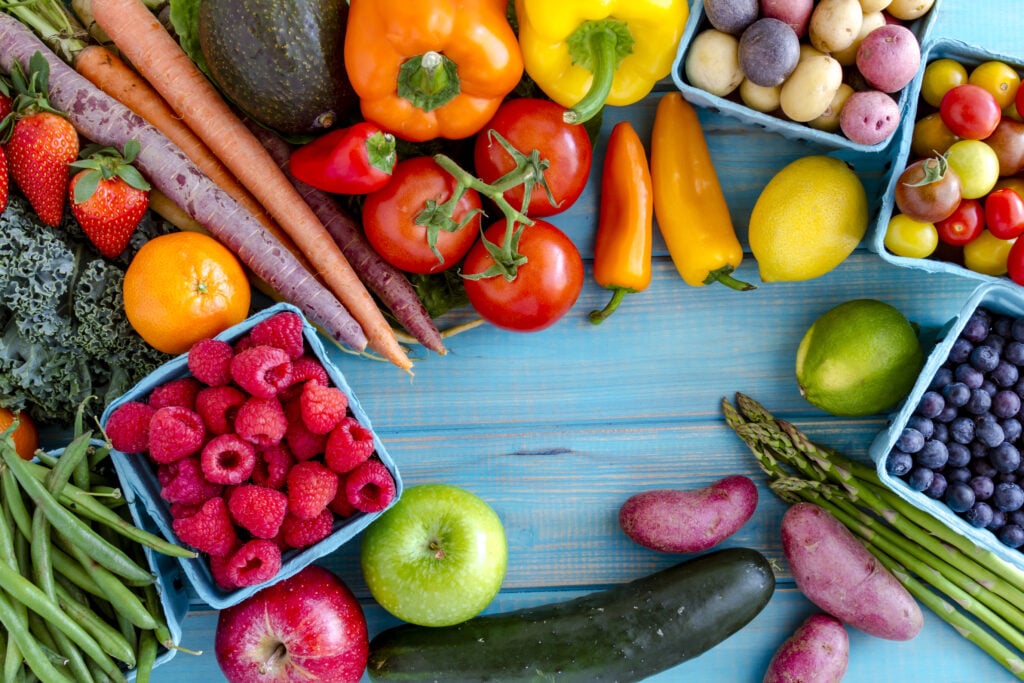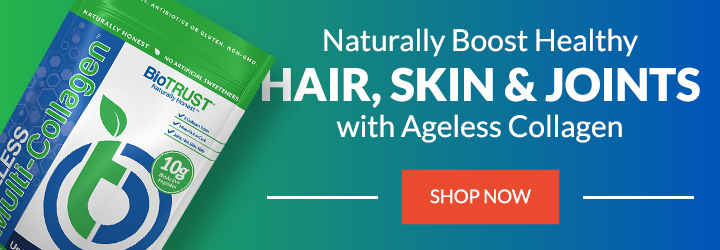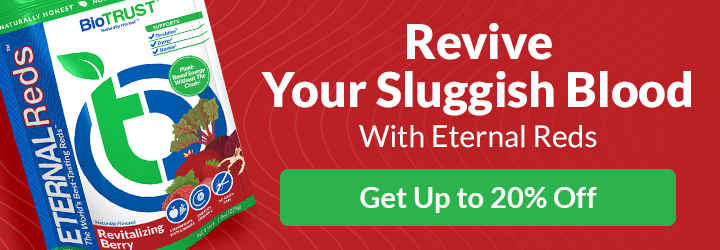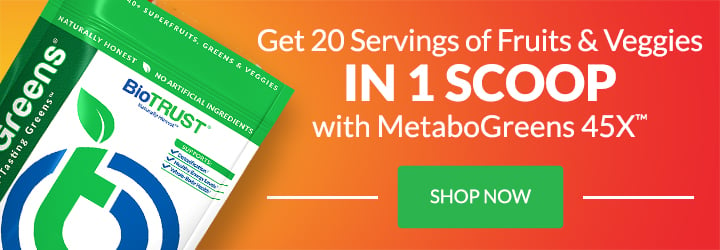Are These Healthy Foods Really Dangerous? (Breaking down scare tactics)

Whether you’re newer to healthy eating or have been dedicated to it for decades, we can all admit there’s a lot of controversy when it comes to what you put in your mouth. You may have even come across foods that you thought were “healthy” that you’re now reading could be dangerous. Are these “dangerous healthy foods” truly bad for you? Or are they just scare tactics to get you to follow a specific diet plan?
First, let’s start with our food philosophy, adopted in large part from all we’ve learned from Precision Nutrition: “There are no bad foods!” In fact, labeling foods as good or bad can backfire and become an obstacle between people and their healthy eating goals. We do not believe in dietary dogma, one right way to eat for every body, or all-or-nothing dieting. (Mainly because it doesn’t work.)
Unfortunately, a lot of the popular information in the health, fitness, and diet space is all about foods you should “never” eat or dangerous healthy foods to limit, if not avoid altogether. (You can even find such content in this blog—though it’s reserved for foods that are masquerading as healthy with misleading labels.)
We believe many of these ideas are spread by people with really good intentions who genuinely want to help people feel better. Yet numerous foods have been demonized or at least frowned upon that are typically considered healthy. There are others that some people may want to avoid but are perfectly fine for others (due to allergies or intolerances, for example). And some foods can be included in a healthy diet but are better when limited.
Let’s dive into three of the most surprising “dangerous healthy foods” and the science behind them.
3 Dangerous Healthy Foods
1) Tomatoes and Other Nightshade Vegetables: If you’ve ever followed (or just read about) an elimination diet, you may have wondered why tomatoes and other edible nightshade vegetables, like eggplants, potatoes, and peppers, are off the list. After all, aren’t these all healthy vegetables?
Indeed, tomatoes and nightshades are rich in antioxidants, vitamins, and other essential nutrients. They also contain glycoalkaloids, which are a bitter compound found in many plants that can cause digestive complaints for some but also offer benefits. 1 The most common reason given to avoid these foods is because they are believed to increase inflammation. There are some very small animal studies that suggest they have some effect on inflammation. 2 However, there’s no conclusive human research indicating they do.
In addition, there are anecdotal reports of people who say their joints hurt more after eating, say, eggplant parmesan with a rich tomato sauce. Or they hurt less when they avoid tomatoes, peppers, and potatoes. Others find they have digestive issues when their diets rely too heavily on potatoes, especially if they already have inflammation in the gut (such as irritable bowel). 3
On the other hand, there are numerous reasons to include these types of vegetables in your diet. For instance, while they contain glycoalkaloids, which are thought to increase inflammation, they also contain antioxidants that are well-known to lessen the inflammatory response.
Lycopene, for instance, is well-known for its antioxidant and anti-inflammatory properties. 4 Nightshades are also high in antioxidant vitamins like A and C. And these vegetables are rich in fiber and water, which promote gut health. 5
Bottom Line: Some people do tend to feel better when they avoid eating nightshades or at least don’t eat them every day. And you can get the nutrients they contain from other foods. That said, for most of us, these foods cause minimal, if any, negative effects, and because they are high in nutrients, they have big benefits.
If you do find your body is irritated or painful, removing or “eliminating” foods from your diet for a couple of weeks can help you determine what’s causing your, say, increased joint pain or bloating. For instance, is it the slice of tomato on an omelet that causes your fingers to ache? Or the beer you enjoy after your work day? Is it the baked potato with Greek yogurt that leads to bloating? Or the highly processed food you grab when you’re on the go a few nights a week? Do you feel fine if you eat your favorite salsa every few days but find you’re more sensitive if you eat them daily?
Be curious about how foods affect the way you feel, and consider keeping a food journal to discover if particular nightshades suit you or not.
2) Conventional Fruits and Veggies: Because of the pesticides, synthetic herbicides, and other chemicals sprayed on vegetables and fruits (and later found in the soil), many people are concerned about the potential negative effects—especially after years of consumption. So, they choose (and recommend) eating only organic fruits and vegetables.
Organic produce is grown without synthetic fertilizers or pesticides or in soil that’s been treated with those types of materials for at least three years. And there are concerns. Excessive pesticide exposure, for instance, has been linked with increased body mass in children and increased insulin resistance in animals. 6
Another concern with traditionally grown produce is that it may contain lower concentrations of nutrients, such as antioxidants, than organic produce. 7 Other research indicates organic produce may be higher in carbohydrates and antioxidants yet lower in protein, fiber, and cadmium (a toxic element). 8
Organically grown produce may also be better for the soil and ecosystem and help decrease air and water pollution, which is vital to the land and the people working it.
Bottom Line: This can all sound scary, but if it’s a question of organic vegetables and fruits or no fruits and vegetables at all (due to access, affordability, or environmental concerns), the choice is clear: Eat the vegetables and fruits you can get. To help ease your concerns, some review research has found the difference between conventional and organic produce was not significant and unlikely to have an effect. 9 Plus, many, if not most, farmers are passionate about safeguarding their land and soil to keep it healthy and producing long into the future, so they are aware of the effects of the chemicals they use to increase yield.
While in a perfect world, many of us may choose organic produce, we need the nutrients found in vegetables and fruits to survive and thrive. But if you’re sticking to a tight budget or live in an area without organic options, you can still eat well—including plenty of conventionally grown vegetables.
To limit pesticide exposure, wash your produce well in cold water and toss the outer leaves or peels. You can also gravitate toward fruits and vegetables that come in their own natural “packaging,” like bananas and avocadoes.
Another option is to choose organic for the foods most likely to be high in pesticides (like those listed on the Dirty Dozen) and choose the most reasonable prices for those on the Clean 15 list. You may also look for more affordable options from your local community-supported agriculture (CSA) program, or purchase food in bulk (to share with friends and family) to limit exposure. Or, you can use other methods to cut costs at the grocery store.
3) Antinutrients: One of the latest food fads (sometimes even perpetuated by people with medical degrees) could scare you away from eating any vegetable, legume, nut, or other plant foods. Various influencers suggest that plant foods aren’t heroes and, in fact, are villains. Why? Because they contain plant toxins or antinutrients. Some of the most “dangerous” listed include spinach, kale, and other dark, leafy greens, beans, and legumes (e.g., peanuts). Yes, the same foods listed as some of the healthiest foods you can eat for generations.
The explanation is that plants naturally contain small levels of toxins to protect themselves and discourage insects and animals from eating them. After all, they want to live, grow, and reproduce too. Common compounds found in these plants include oxalates, phytic acid, lectins, saponins, and tannins. 10
These “antinutrients” have been so named because they decrease the absorption of nutrients. For instance, glycosylates and goitrogens are found in cruciferous vegetables. These compounds may interfere with the absorption of iodine, which is especially concerning for those already deficient in iodine. Lectins, which are found in beans and legumes, may interrupt the absorption of minerals like calcium, iron, phosphorous, and zinc. And nuts, including peanuts (a legume) and almonds, contain lectins and oxalates, which may interfere with the absorption of minerals like calcium and magnesium.
That said, antinutrients may not be all that harmful—and many have definitely been shown to be helpful. In fact, there is a lot of evidence that they help lower cholesterol, stabilize blood sugar, balance inflammation, protect against organ damage, and promote gut health. 11, 12
For example, lectin, which is found in beans and legumes, has been found in research to potentially help destroy cancer cells, decrease the risk of type 2 diabetes and obesity, and diminish the potency of HIV. 13 Dark leafy greens like spinach are calorie sparse yet rich in vitamin A, vitamin K, beta-carotene, vitamin C, lutein, and manganese. Nuts are rich in fiber that promotes gut health and helps keep you regular. Depending on the nut, they’re also rich in healthy fats, protein, and loads of vitamins, including B vitamins, calcium, vitamin E, folate, and magnesium.
What’s more, regularly consuming beans, legumes, vegetables, fruits, whole grains, and nuts (like the Mediterranean Diet) has been shown time and again to help prevent various diseases, including cancer and heart disease, and even help you live longer. 14, 15 Diets low in nuts, on the other hand, have been associated with an increased risk of death from diabetes and cardiovascular disease. 16
Bottom Line: If you want to live a long, healthy life, eating a lot of nutrient-rich plant foods, including those that contain “antinutrients,” appears to be one of the most effective things you can do. Rather than avoiding vegetables, legumes, beans, and nuts, include a variety in your daily meals to promote:
- Gut health
- Heart health
- Healthy blood sugar levels
- Decreased risk of cancer
- Appetite control
- Vision improvements
- Brain health
- Healthy glowing skin
- And more…
If you are worried about how antinutrients affect nutrient absorption, how you process your foods can help decrease possible negative effects. For instance, soaking, sprouting, germinating, fermenting, milling, and cooking can lessen the amount of antinutrients you consume. Eating a wide variety of foods as part of a balanced meal may also mitigate the problems of absorption, as could spreading out your portions throughout the day instead of, for instance, consuming all of your leafy greens at one meal. 11
Dangerous Healthy Foods
Navigating nutrition choices can be challenging, especially with so much controversy and competing ideas. Fads come and go, but there is some good advice that has stood the test of time, such as “eat more vegetables.” Yet there may be times when even that advice isn’t right for you and your body. And your best diet could differ dramatically from others. Instead of just following the advice of influencers (however well-meaning), be curious about how your diet impacts you and how you feel to determine the right (or wrong) diet for you.






 7 Signs Your Body is Seriously Low on Collagen (not just wrinkles)
7 Signs Your Body is Seriously Low on Collagen (not just wrinkles) Health Expert: "Turmeric Doesn't Work (unless...)"
Health Expert: "Turmeric Doesn't Work (unless...)" 3 Warning Signs Your Probiotic Supplement is a Total Waste
3 Warning Signs Your Probiotic Supplement is a Total Waste

